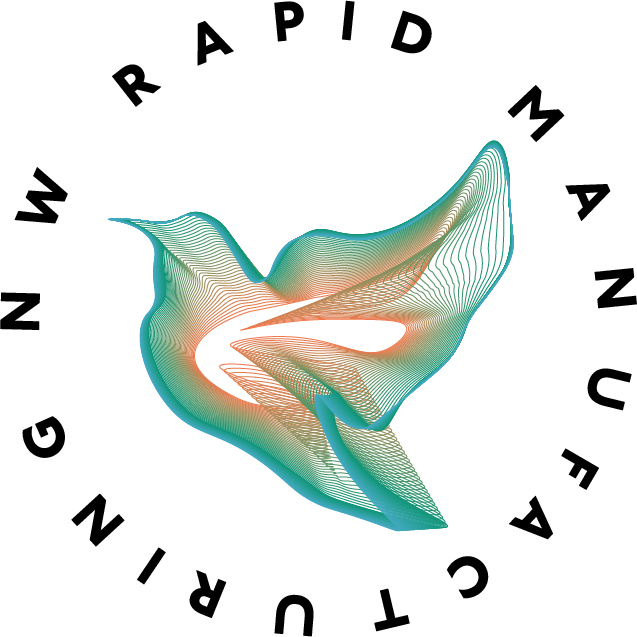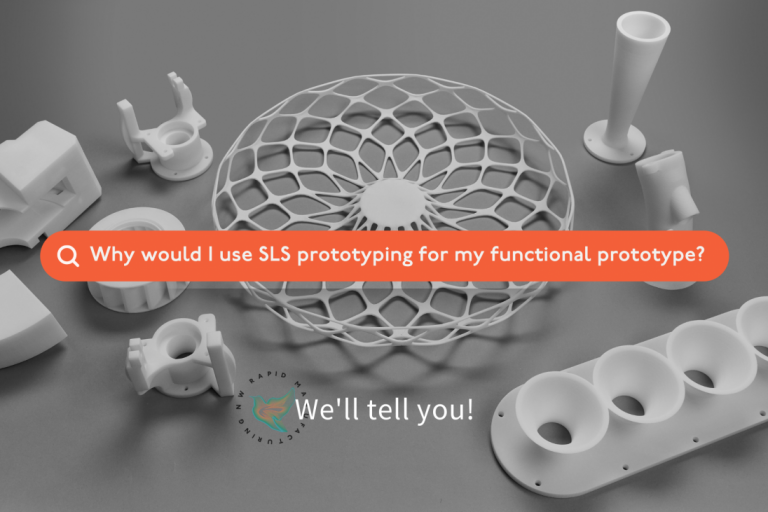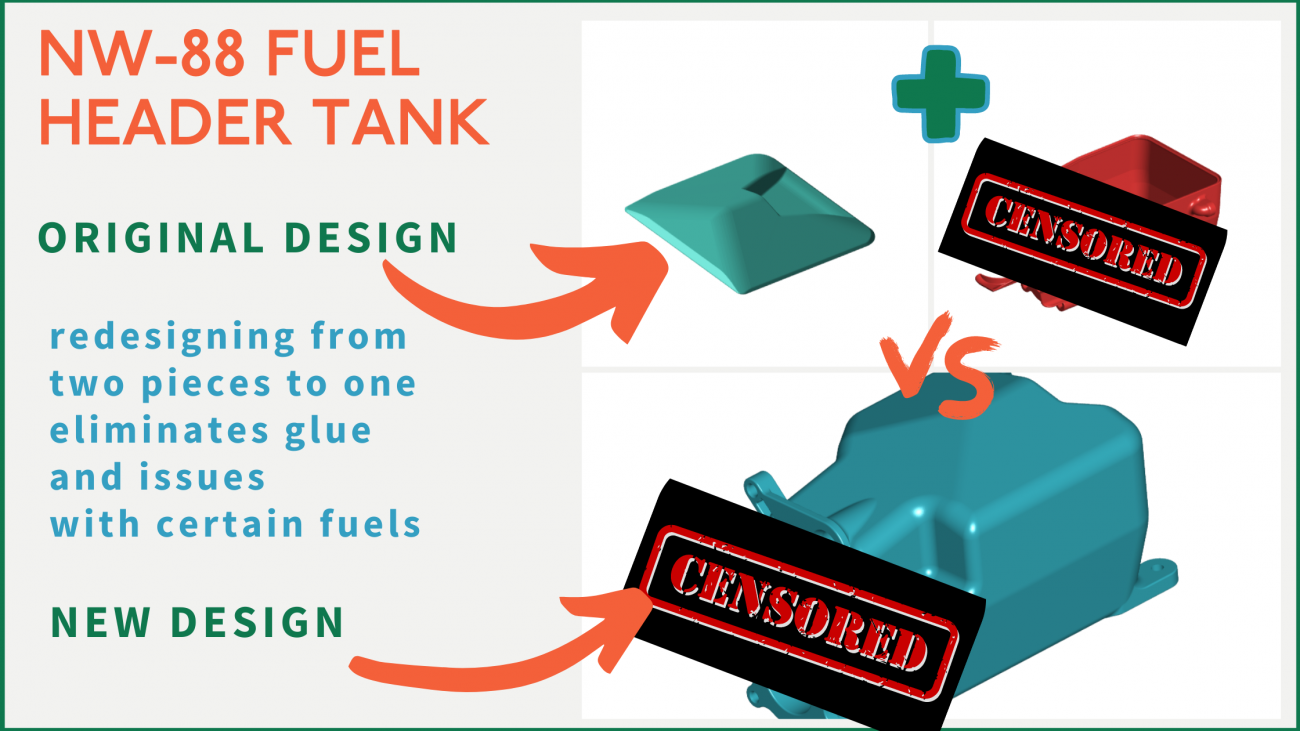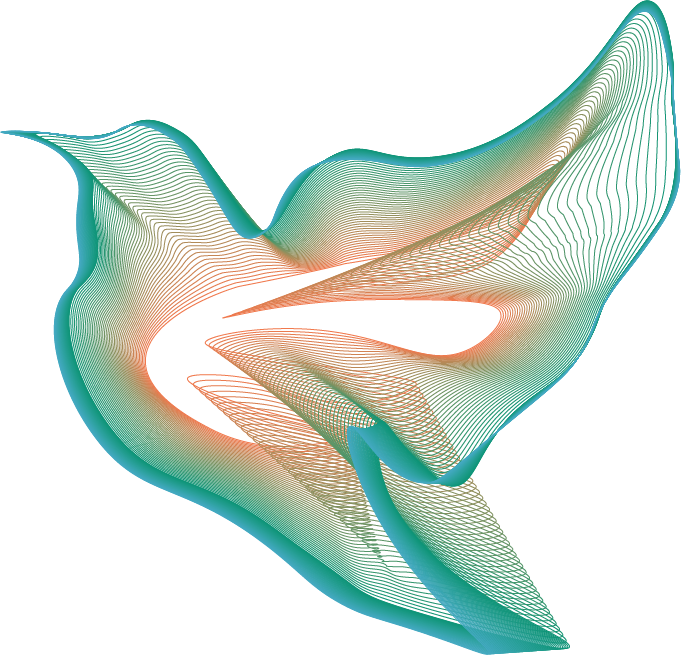
Functional Prototyping with SLS 3d printing

You want to know exactly how it's going to work before you take the plunge...
Sounds like you need a functional prototype. And if you’re here, we’re guessing you aren’t sure of the best way to make one … There’s a lot of ways to prototype. In fact, there are a lot of ways to prototype with just different kinds of 3d printing! Though we can’t tell you exactly what functional prototyping looks like with other methods, we can help you see why our customers choose selective laser sintering with us. We even have some insight for you from our sister company, Northwest UAV.
We can tell you all the good stuff we know about functional prototyping with selective laser sintering (SLS) – how cost effective it can be and how fast it is – but we know that you know … We have a pretty hefty bias. So, rather than just tout how amazing we are at prototyping (though we’re happy to do that … Just say the word), we’re going to explain functional prototyping with SLS using an example and a discussion we had with an aerospace engineer at our sister company, Northwest UAV (NWUAV). NWUAV designs and manufactures propulsion systems for unmanned aerial vehicles (UAVs), and one of their most recently designed engines, the NW-88 Engine, has required a number of functional prototyped components (just like their NW-44 Engine did before it). So, we sat down with NWUAV Senior Aerospace Engineer Chris Pellegrino to understand why NWUAV continues to choose selective laser sintering for these functional prototypes.
First, let’s establish what a functional prototype is…
Just to make sure we’re both on the same page, let’s establish what a functional prototype is. A functional prototype is a real-world example of something designed in CAD that incorporates the important requirements and capabilities so it can be understood how the final product will function. For NWUAV, Chris explained, the functional prototype is usually the entire component, and the final product is often made with the same SLS process as the prototype. This means that NWUAV’s functional prototypes are put through the same rigorous testing as the rest of the engine, both on engine test stands and in actual test flights.
But Chris clarified that a functional prototype doesn’t necessarily have to be the entire component or use the same manufacturing process used in prototyping. For example, a functional prototype in consumer products is often more like a rough representation of one piece of a larger product, and the final components are often made with a more involved and expensive process once the prototypes are approved.
Need an example?
Well, if you look at NWUAV’s NW-44 Engine, every part that ended up in production as an SLS part started out as a functional prototype from NW Rapid Manufacturing, including the cooling shroud and puck as pointed out in the video above. But consider this more specific example: Printing a portion of an aircraft fuselage to work out engine integration details that really can’t be completed in 3D CAD software. As Chris explained, consider trying to design the routing of electrical harnesses and fuel lines around a fuselage. The 3D CAD world can’t account for the reality of bending a harness around obstacles, and how and where a harness is best tied down. You can’t always wait until after everything is actually in-hand to figure out these details for a variety of reasons – availability of the component, timeline constraints, cost and time to send the component. In this situation then, a great solution is a functional prototype of the fuselage for engineers to physically route electrical harnesses and fuel lines around.
Why would you choose SLS for functional prototypes?
We know, this is what you really want to know ... Why would you choose selective laser sintering for your functional prototype? Well, we asked Chris just that and he gave us some fantastic insight:
- Design freedom. With SLS printing you can design pretty much whatever you want without accounting for any sort of manufacturing limitations. A variety of limitations on part geometry that you would experience with methods like machining and injection molding don’t exist with 3d printing.
- Design changes are free. This not only impacts overall cost, but it also impacts product possibilities and how much you (or the person footing the bill) is willing to explore better designs for your prototype before settling on the design that is manufactured. With 3D printing, when you update your design (you know, the whole point of prototyping) there aren’t any molds or fixturing that need to be modified, or tooling paths that need to be updated. You just update your design and get a new version of your prototype, no change in cost for the new prototype (unless, of course, you add a finishing).
- Cost. On top of free design changes, the design freedom that 3d printing offers can mean printing a design as one component rather than multiple components to be assembled later. That means only one part number, one drawing, no mating interfaces to design and optimize, no mating interfaces to wear out, and no assembly time – all of which save money. And for those using production methods other than 3d printing for your final product (remember the consumer product example above), printing a prototype part is significantly cheaper (and faster) than cutting a mold.
- Speed. 3d printing is the fastest prototyping and manufacturing method available. Obviously, getting a prototype in your hand as soon as possible (to assess, test, and potentially update) is a significant advantage, especially when you have potential customers ready to see all that your product can do.
- Easy mock-ups. Thanks to its speed, 3d printing makes for great mock-ups of connecting components that you don’t quite have in your hand yet. 3D printing can solve the problem of a missing mating component that you can’t get in time or doesn’t physically exist yet but is needed to complete an assembly layout. Chris offered the example of printing out a component that they’re waiting on to be cast or machined out of aluminum, so they can mock something up and keep the design moving until the metal part arrives.


Okay … So how do I choose the SLS manufacturer to work with?
Though we would say look for unmatched humor and style (so basically, work with us), Chris had a few good reasons why NWUAV works with us at NW Rapid Manufacturing that you can apply to your own search:
“NW Rapid pays very close attention to the quality of the powder that is used as well as the machine settings. This is absolutely critical if you want parts that don’t end up coming apart. NW Rapid knows the process extremely well and can tell us if a size tolerance we want is too tight or can be held tighter. They are also continually exploring other post processes that add more capabilities and quality to the finished part that helps us achieve better overall designs.”
Quality, expertise, and a commitment to continued excellence in SLS manufacturing – find a company that offers all three and you’ve found yourself a great partner for functional prototyping!
